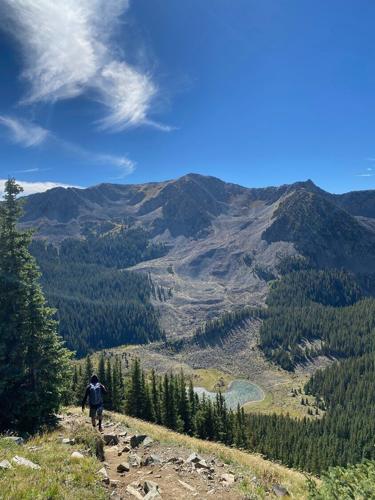The central purpose of public lands is to be just that — public, accessible to everyone. The problem is some wilderness areas are so treacherous not everyone is cut out to traverse them. A wider understanding of this depends on better public information and education, and not just from experienced outdoorists; everyone living near rugged public spaces has a duty to help visitors understand the risks these areas pose.
The rescue of two hikers who became stranded on a sheet of ice near Wheeler Peak Dec. 21 is one of many similar emergencies that have sent Taos County first responders into action over the decades, and they’re likely to become more frequent as the number of visitors and new residents increases in the region. Taos County’s population grew by twice the statewide average of 2.4 percent from 2010 to 2022, according to the U.S. Census Bureau, and the New Mexico Outdoor Recreation Division is bolstering the state's reputation as an outdoor adventure destination further by the day.
Since Taoseños might be just as likely to encounter an out-of-towner on the trail or river as they are a neighbor these days, some friendly communication — about significant elevation changes, poor signage, washed out trails, high water conditions, bad weather on the horizon or other dangers that lie ahead — could save someone’s life, or the life of a search and rescue team member. Of course, merely living in Taos doesn’t make you Ernest Shackleton, so even some longtime residents could benefit from refreshing their wilderness safety knowledge and skills from time to time.
Hotel and Airbnb owners could also serve as a first stop for safety information on the area. A “know-before-you-go” section would fit right in alongside pamphlets on places to camp, fish and hike, and that might also include basics on how to prevent broader disasters like wildfires. These types of provisos wouldn’t need to be heavy handed or ominous, but rather a nice touch visitors could appreciate receiving from their hotel hosts and short-term landlords, who have a vested interest in keeping their guests safe, happy and coming back for return business.
The Town of Taos and Taos County, whose first responders are often put at risk in outdoor emergencies alongside state agencies, have some good resources available on their websites, but could also do with the addition of some practical advice on how to stay safe in the great outdoors.
Adding deceleration lanes is a roadwork essential
Roadwork through Taos has been unavoidable in recent years, yet there will remain some glaring oversights still to be addressed when construction crews pack up and leave town. Deceleration lanes will be among them.
U.S. 64 West, which crosses the Rio Grande Gorge Bridge, is one of the most egregious examples of a local high-speed roadway where residents with homes on either side of the highway bring trailing traffic skidding to halt as they make their turns to go home. This isn’t just unpleasant — it’s also dangerous.
In fact, the road’s lack of side or central turn lanes allowing traffic to slow down proved fatal in October 2021, when a man driving an SUV crashed into the back of a woman driving a station wagon who had stopped to make a turn, killing her.
Dedicated lanes allowing drivers to slow down before turning would prevent similar accidents, as well as rollovers caused by taking turns too quickly and confusion from drivers who don't know the area.
No one likes road work, but additions that make driving in Taos County safer are the kind we should all be able to get on board with.













(0) comments
Welcome to the discussion.
Log In
All comment authors MUST use their real names. Posts that cannot be ascribed to a real person
will not be moderated.
Keep it Clean. Please avoid obscene, vulgar, lewd, racist or sexually-oriented language.
PLEASE TURN OFF YOUR CAPS LOCK.
Don't Threaten. Threats of harming another person will not be tolerated.
Be Truthful. Don't knowingly lie about anyone or anything.
Be Nice. No racism, sexism or any sort of -ism that is degrading to another person.
Be Proactive. Use the 'Report' link on each comment to let us know of abusive posts.
Share with Us. We'd love to hear eyewitness accounts, the history behind an article.